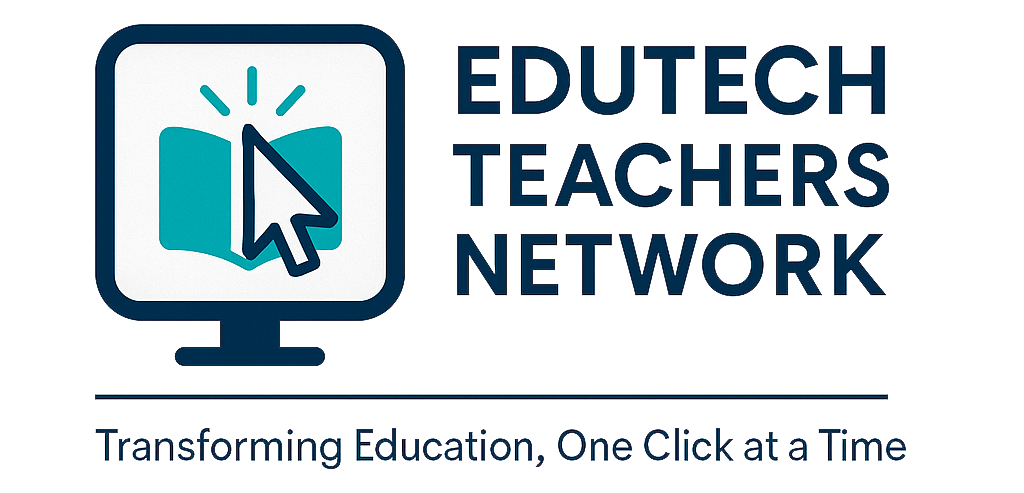
Technologies That Transform Special Needs Education in Africa
Introduction
Across Africa’s vibrant educational landscapes, from the bustling markets of Lagos to the serene hills of Kampala, teachers are harnessing assistive technologies to unlock potential in learners with special needs. Picture a mother in rural Tanzania watching her dyslexic son devour stories through an app that speaks the words he once struggled to read. Or a group of deaf students in South Africa collaborating on a science project using AI-driven sign language translation. These moments capture the essence of transformation, where technology meets humanity.
The Edutech Teachers Network, rooted in Sharebility Uganda’s collaborative spirit, champions this change. Our mission—to build tech-savvy educator communities—drives us to explore how these tools foster inclusive learning. This article examines assistive technologies’ role in SNE, with Ugandan and African contexts, challenges, and actionable insights. It connects to prior pieces like “Designing Inclusive Lesson Plans with ICT,” providing advanced applications.
Evolving SNE in Africa: From Barriers to Breakthroughs
SNE in Africa faces stark realities: World Bank 2025 data shows 80% of disabled children lack access to education. In Uganda, cultural stigmas and resource scarcity compound this. Yet, assistive tech offers breakthroughs, with mobile penetration at 45% enabling app-based solutions.
Local innovations, like Uganda’s Makere University-developed apps, show promise. A teacher in Arua shared how a simple vibration alert device helped a hearing-impaired student stay engaged.
Visual Impairment Tools: Seeing Beyond Limits
Braille embossers like the ViewPlus produce tactile materials. In Malawi, schools use them for customized books.
VoiceOver on iOS devices reads interfaces aloud. Ugandan teachers integrate it for navigation lessons as shown in Table below.
| Technology | Description | Cost | Examples |
| ViewPlus Embosser | Prints braille documents | 1000-3000 | Ugandan libraries |
| VoiceOver | Built-in screen reader | Free | Widespread in Africa |
Hearing Impairment Innovations: Amplifying Voices
In the vibrant tapestry of African education, where every voice matters, innovations for hearing-impaired learners are breaking barriers and amplifying dreams. The AVA app, a groundbreaking AI tool, transforms group conversations by providing real-time speech-to-text transcription, enabling seamless participation. In Botswana, secondary schools have embraced AVA for inclusive debates, where students like Tshepo, a hearing-impaired teen, confidently share ideas on climate change, their words transcribed instantly on shared tablets, fostering a sense of belonging. In Uganda, clinics like those in Kampala’s Mulago Hospital pair cochlear implant apps with educational programs, fine-tuning devices to optimize hearing while teaching students like Sarah, a 15-year-old from Jinja, to interpret sounds in noisy classrooms. These apps adjust sound frequencies in real time, helping learners distinguish lessons from background chatter. Combined with teacher training from initiatives like UNICEF’s model schools, these tools empower hearing-impaired students to engage fully, turning silent struggles into vibrant voices of progress across African classrooms.
Cochlear implant apps fine-tune hearing,Ugandans also use them in different discussions or gatherings to improve on their communication.
Table:
| Technology | Description | Cost | Examples |
| AVA | Multi-speaker transcription | Free | Zambian schools |
| Cochlear Apps | Implant tuning | Varies | Ugandan health-ed links |
Cognitive Support: Nurturing Minds
In the diverse classrooms of Africa, where every mind holds unique potential, assistive AI tools are nurturing cognitive growth for learners with special needs. Lumosity, a suite of engaging brain-training games, builds skills like memory and focus, adapted in Kenyan schools to support students with ADHD, helping them channel energy into structured learning through fun, interactive challenges. For instance, in Nairobi, a boy named Kofi uses Lumosity to improve attention during math lessons, his progress sparking joy in his teacher’s eyes. Read&Write software, with its predictive text and text-to-speech features, empowers dyslexic learners by easing reading and writing struggles, as seen in Ugandan schools like those in Masaka, where students like Amina now draft essays confidently. These tools, supported by teacher training from programs like the EduTech Teachers Network, create personalized learning paths, fostering resilience and self-esteem. By transforming challenges into opportunities, AI is nurturing young minds across Africa, ensuring every student’s potential blossoms.
Table:
| Technology | Description | Cost | Examples |
| Lumosity | Brain training | 60/year | Ghanaian programs |
| Read&Write | Literacy support | Free trial | Ugandan dyslexia centers |
Motor Impairment Aids: Moving Forward
Sip-and-puff systems control devices via breath. In Egypt, for quadriplegic students.
Adaptive keyboards with large keys. Ugandan SNE schools use them. Sip-and-puff systems control devices via breath are now in use in African countries as shown in the image below where we see determined Ugandan girl with a rich, deep black skin tone and dark, neatly styled hair who is actively engaged in a vibrant classroom seating and learning using a sip-and-puff assistive device to interact with technology, with her focus sharp and intent on her studies with her teacher guiding and supporting her learning process, attentively monitoring her progress.
Breath of independence.
Table:
| Technology | Description | Cost | Examples |
| Sip-and-Puff | Breath control | 200-500 | South African rehab |
| Adaptive Keyboards | Custom input | 50-150 | Ugandan classes |
Strategies for African Educators
Leverage free resources from our network. Address connectivity with offline modes.
Reference Module 5 of Shareability EduTech Course for SNE integration. Ecosystem BuildingOur annual conferences showcase SNE tech.
Conclusion
Assistive tech is reshaping SNE, aligning with our slogan: “Transforming Education, One Click at a Time.” Engage with us for a more inclusive Africa yes we can.
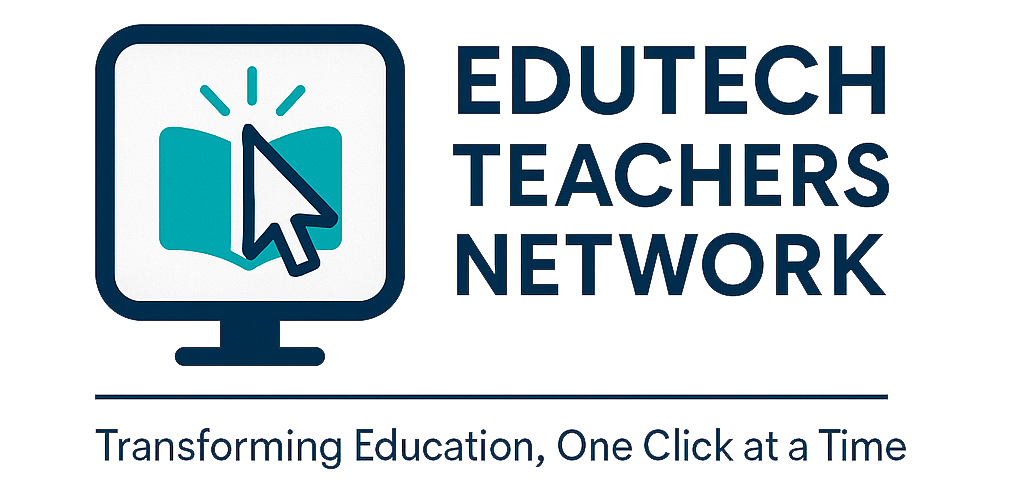
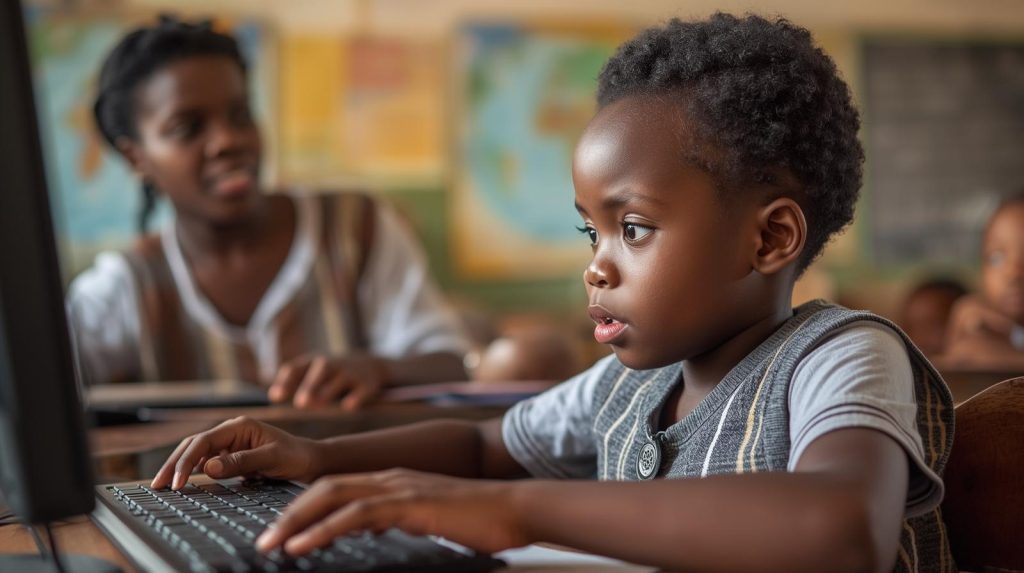
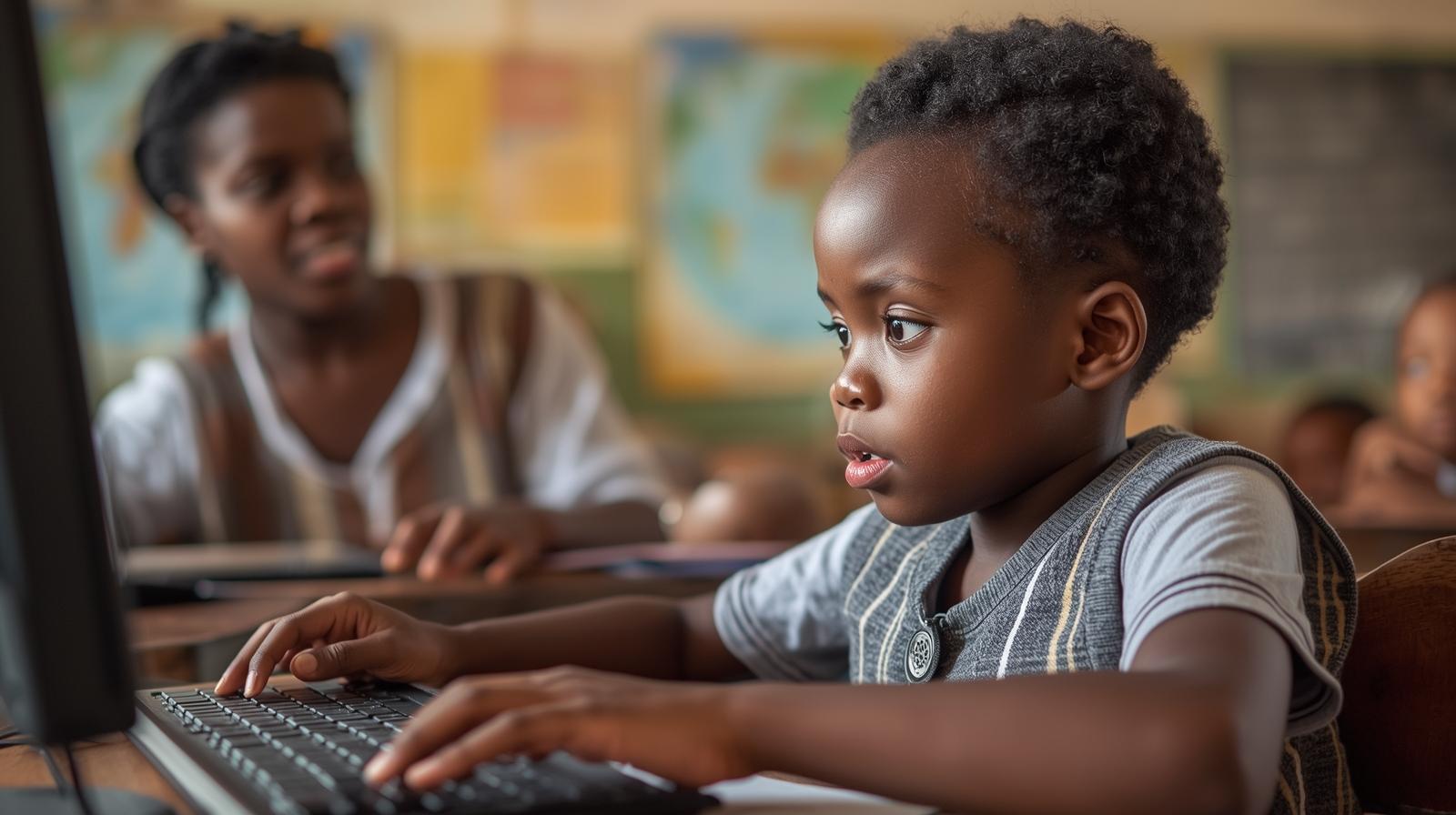
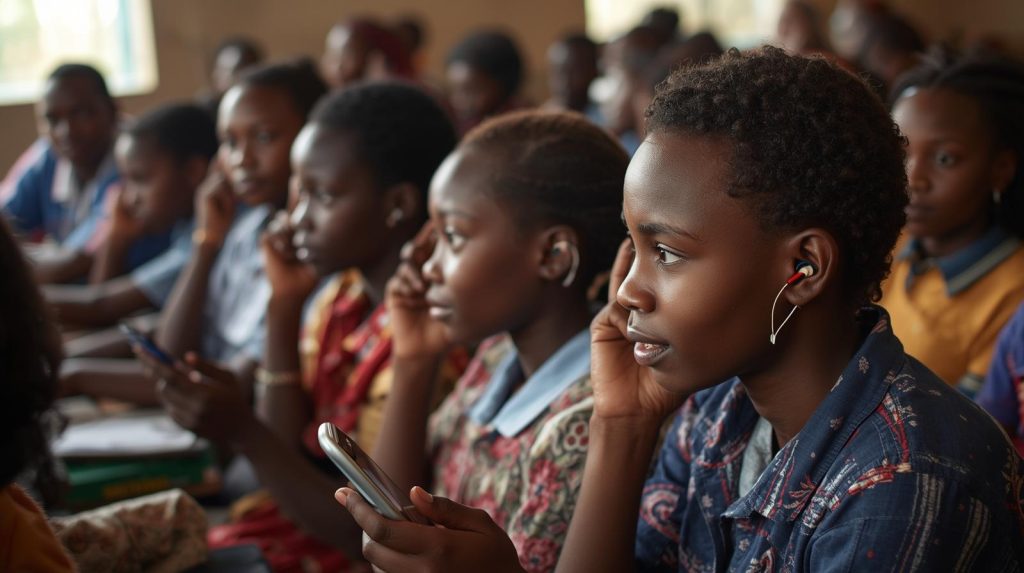
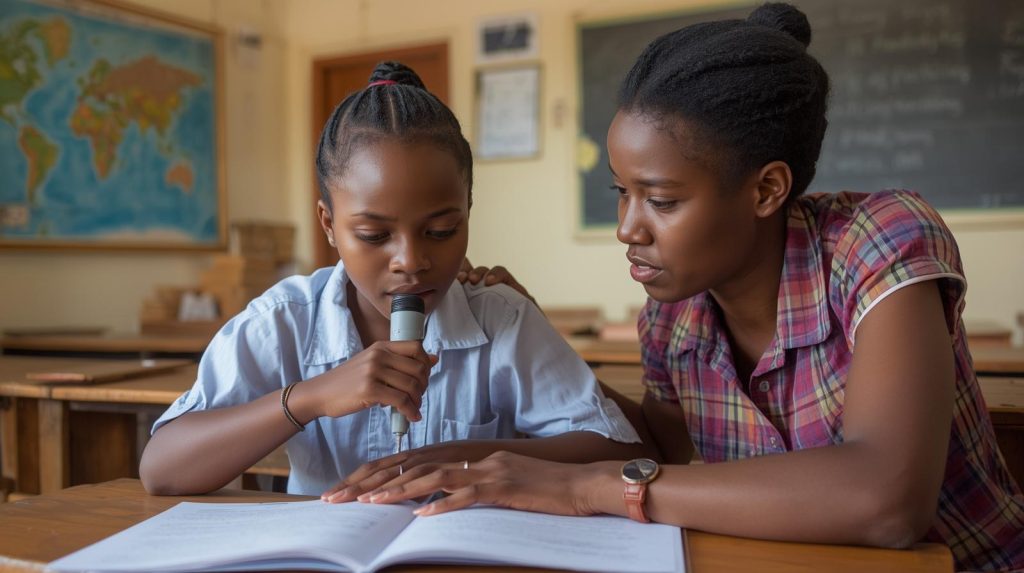
Leave a Reply